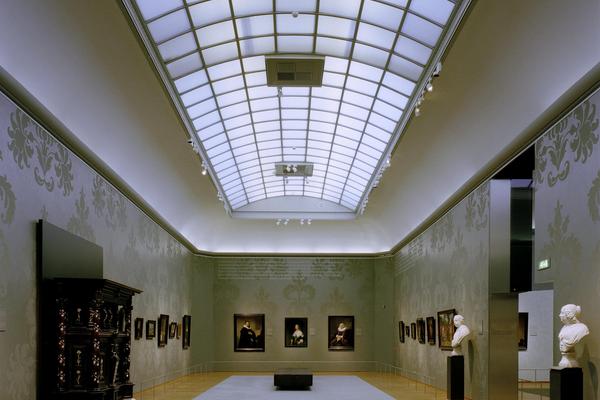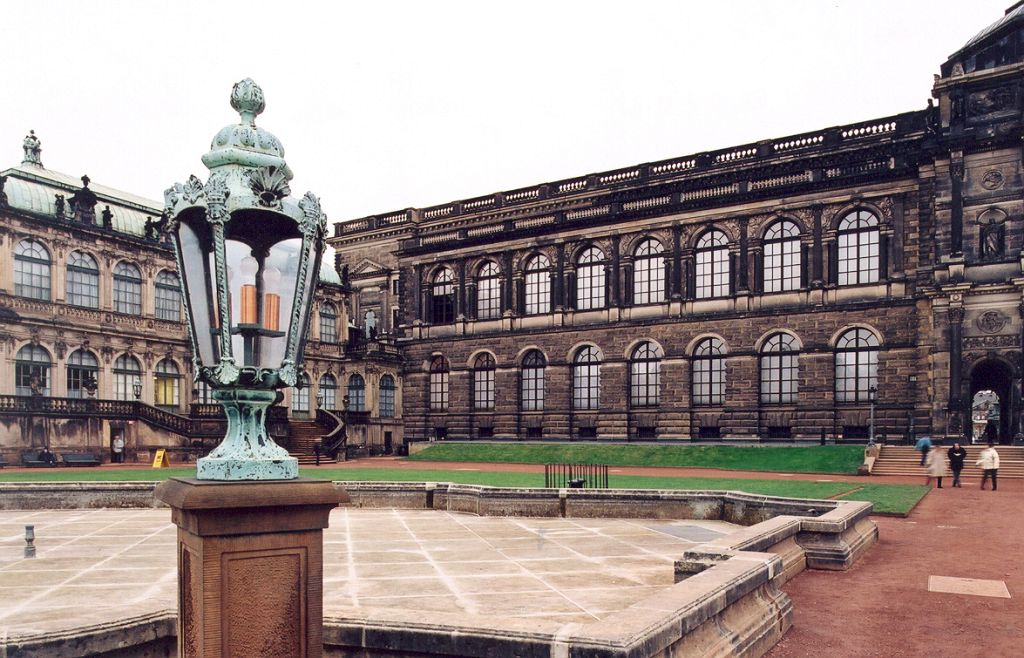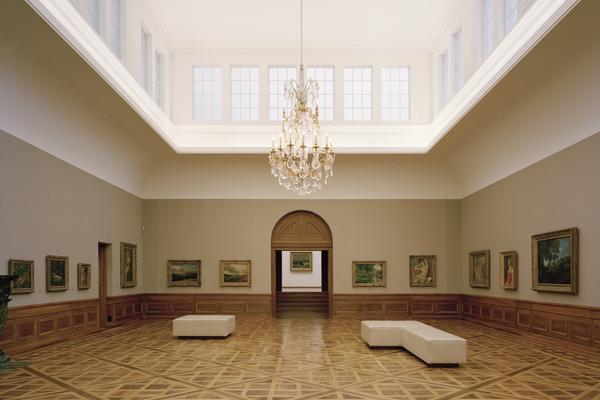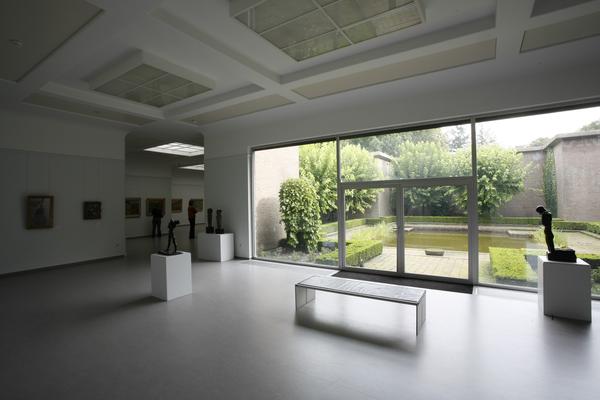The burglary in the Grünes Gewölbe, the world famous treasure chamber of Saxony, is viewed as the largest art robbery in recent memory. At the same time, the act in Dresden is the spectacular climax of a series of art thefts, which have one thing in common: It was easy for the culprits to break the glass panes, whether windows or showcases. Based on the current state of technology, the burglary protection can be significantly improved through safety glass.
In the early morning hours of November 25, 2019, culprits break the window pane, cut the window grating and are within seconds into the first floor of the Residenzschloss in Dresden. A mechanical burglary protection of the windows could have delayed the culprits decisively - but this was in this case definitely not available.
The culprits in the legendary Grünes Gewölbe run through the Pretiosensaal into the jewelry room and go straight to a showcase. The safety glass breaks already after 20 seconds and a few hits with the ax - that is what the images of a surveillance camera show. The escape through the window back to the outside is successful after three gemstone ensembles have been stolen. “An immense historic art and cultural damages has been created for the free state of Saxony. The stolen gemstones are in a manner of speaking part of the crown jewels of the Kings of Saxony”, says Eva-Maria Stange, Minister of Art in Saxony.
Next to drugs, weapons and human trafficking, the theft of cultural objects is among the most lucrative crimes. The “mother of all art burglaries”, the robbery of the Mona Lisa by Leonardo da Vinci in 1911 from the Louvre in Paris represented the unthinkable up to that time. Shards were not even required for this coup - the thief took the best known piece of art of all times from its hook and carried it to the outside hidden under his work coat.
However, the history of the criminal discipline shows again and again: The lowest common denominator of any safety concept for works of art is - glass. Because art wants to be viewed, art needs light and a representative ambiance. Art in a bunker is not art but only a capital investment. Therefore, a compromise has to be made: How much safety can be tolerated to ensure that the work does not lose its effect? History shows: Safety was often short changed.
For example in 2002. The break-in into the Van Gogh museum in Amsterdam occurs through a window. The thieves flee with two paintings of the Dutch master, which are found 14 years later during a Mafia raid. Also in 2002: Using a hammer and a crowbar, the culprits destroy the window panes of the Brücke museum in Berlin and they steal nine expressionistic paintings with a value of 3.66 million Euro. Shards were also produced in 2010 in the Musée national d’Art moderne de la Ville de Paris,: Burglary through a side window. Five paintings with a value of 100 million Euro are stolen.
Or Rotterdam 2012: Also burglary through a window. Seven master works of artists such as Picasso, Matisse, Monet or Gauguin disappear during the night from the KunsthalRotterdam. Another example in Berlin: The 100 kg heavy gold coin Big Maple Leaf is stolen in 2017 from the Bode museum. The culprits destroy the showcase in which the coin was displayed. The tool for the act? Also an ax. The Achilles heel: a showcase. The same as in the Grünes Gewölbe in Dresden.
Experts agree: A glass showcase made of cutting-edge safety glass can stop burglars for at least ten minutes. Those of us who know the Silatec safety glass can therefore not understand why the burglary in Dresden had to happen. During a test presentation, two “culprits” hit a P6B certified Silatec glass pane three dozen times and for more than 40 seconds. Not a single splinter is released. This means that the Dresden art robbery could not have happened if the showcase would have consisted of this material.
The art robber in the Grünes Gewölbe cause consternation worldwide. Many museums want to optimize their safety concept now. The focus must be on the mechanical protection. Because the culprits must be held as long as possible at the crime scene to ensure that the police can arrive in time. In contrast, electronic systems do not prevent the burglary, they only trigger the alarm chain.
How long does it take for the police to reach the crime scene after the alarm is triggered? This time period must decide the quality of the mechanical safety to be on the safe side. With respect to the safety glass, the categories through throw resisting, breakthrough resisting, full penetration resisting and blast action resisting help.
Silatec safety glass is tested and certified in accordance with strict standards. This includes the European standard for burglarproof glass and the even stricter standards of the VDS damage prevention of the largest European institute for company safety. As of today, Silatec prevented more than 1000 burglaries.
And tests in accordance with practical uses since each burglary attempt follows its own standard. For this purpose, cooperations take place with squad forces such as the German GSG9, the Austrian Cobra or with the military in a variety of countries. Attacks with an ax, a machine pistol or vehicle crashes into the display window are included in the test standard. The conditions cannot be brutal enough!
The safety glass by Silatec is not only more stable than conventional armored glass. It is also crystal clear, colorless as well as extremely light weight and thin. This ensures that works of art are not altered. The typical armored glass green tint does not exist. And the Silatec glass has an additional benefit: It offers a 100 percent protection against UV radiation. Because UV light triggers photo-chemical processes that can result in a change of the pigments or the coloring.
The consequences include fading, browning and a significant loss of value. In addition, the Silatec safety glass can be processed in almost all sizes, forms, angles and radii. The applications are varied accordingly. Silatec safety glass is used in museums as well as mansions, at jewelers and in institutions such as the Reichstag, several embassies or in the Neue Synagoge in Berlin.








How is the safety situation of our cultural possessions? The frightening scenario of Dresden, but also the burglary in the Berlin Stasi museum, which only took place a few days later and which followed the same process, do not bode well. “Many time bombs are ticking” says the safety expert Dick Drent. The Dutchman is professor for threat and risk management and he provides consultations for Museums all over the world.
In 2016, he supervised the investigations for the Van Gogh museum, which resulted in the return of the Van Gogh paintings - those works that were stolen 14 years earlier during a spectacular burglary in the Van Gogh museum in Amsterdam. At the time, the police was surprised because a security firm controlled the museum around the clock. In addition, video cameras and infrared systems were installed to protect this collection of the works of the Dutch master which is the largest worldwide. Using a ladder, the thieves climbed on the roof, broke the glass in a window and entered the building through the window.
Cases such as the ones in Amsterdam or Dresden clearly show: The safety systems had a decisive gap - and this gap was made of glass. “Safety glass is only one part of the overall concept, but it is a part that is absolutely needed”, emphasizes the expert Dick Drent. “Electronic systems also fulfill their purpose. But they need a secured electrical supply. And - this is often overlooked - they are used to report the burglary as well as for documentation. But motion detectors, alarm systems and video cameras do not slow the culprits down. Only physics and mechanics can do that.”
How long does it take for the action forces to reach the crime scene? This question is asked at the start of any safety concept. The mechanical protection must be based on this time period. Of course, the basis is a worst case scenario. This means, for example, that problematic traffic situations must be part of the plan - the fasted alarm message is meaningless if the police is stuck in a traffic jam. And a siren does not stop a thief. However, a safety glass that is worth its name does. Because the art robbers again and again show: The Achilles heel is made of glass.